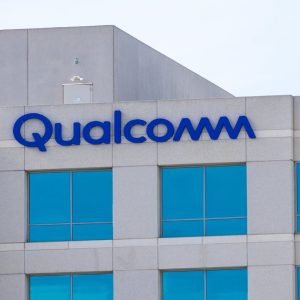
Applied Materials has reported revenue of $7.05bn in the fourth quarter of fiscal year 2024 (Q4 FY2024) while forecasting weaker demand outside of AI-powered chips.
For the first quarter of fiscal year 2025 (Q1 FY2025), Applied Materials has projected revenue of around $7.15bn, within a guidance range of $6.75bn to $7.55bn. This figure represents a 7% year-over-year growth in revenue. However, the forecast falls slightly short of Wall Street’s expectation of $7.22bn. Following this announcement, Applied Materials’ stock dropped almost 5% in after-hours trading.
The company also provided a forecast for its non-GAAP diluted earnings per share (EPS) for Q1 FY2025, estimated at approximately $2.29, plus or minus $0.18, narrowly surpassing analyst predictions of $2.27.
Applied Materials has faced additional uncertainty due to US export controls targeting high-end chips and semiconductor manufacturing equipment sold to China. For Q4 FY2024, China accounted for 30% of the company’s total revenue, down from 44% during the same period last year.
“Applied Materials’ technology leadership and strong execution drove record Q4 and fiscal 2024 performance, our fifth consecutive year of growth,” said Applied Materials’ president and CEO Gary Dickerson. “Our portfolio of products and services uniquely positions us to enable our customers in their pursuit of AI and energy-efficient computing. As these key drivers of semiconductor innovation continue to grow in importance, the industry’s roadmap is becoming increasingly dependent on materials engineering, where Applied is the clear leader.”
How Applied Materials performed in Q4 FY2024 and FY2024
Applied Materials’ revenue for Q4 FY2024, which ended on 27 October, surpassed analyst estimates of $6.95bn. The company posted a GAAP gross margin of 47.3% and operating income of $2.05bn, representing 29% of net revenue. On a non-GAAP basis, gross margin reached 47.5%, with operating income of $2.06bn and earnings per share (EPS) of $2.32, surpassing Wall Street forecasts of $2.19.
For the full fiscal year 2024, the company reported revenue of $27.18bn, with a GAAP gross margin of 47.5% and EPS of $8.61.
Applied Materials saw its leading-edge logic product segment grow significantly in fiscal year 2024, driven by demand for Gate-All-Around transistors and advanced packaging solutions. The company generated more than $2.5bn from these advanced nodes throughout the year, with expectations to approximately double these revenues in 2025. Additionally, the company’s high-bandwidth memory (HBM) packaging segment generated over $700m in FY2024.
The advanced packaging division reported revenue growth to nearly $1.7bn, with further expansion anticipated as heterogeneous integration becomes more widespread. Additionally, the company’s services division achieved double-digit growth, backed by the signing of its first five-year service agreements with multiple key customers.
Applied Materials plans to capitalise on advances in AI, automation, robotics, clean energy, and semiconductor packaging, which are driving demand for next-generation chip technologies. The company is expected to continue investing in its collaborative R&D platforms, such as the EPIC Center, to shorten development cycles and enhance customer collaboration.
Non-AI chip demand faces a significant decline
Recent trends suggest that the semiconductor industry is experiencing a sharp decline in demand for non-AI chips, particularly CPUs, as market focus shifts towards AI-driven technologies.
Infineon Technologies for instance has forecast a sales drop for the fiscal year ending September 2025, citing weakened demand in automotive and industrial equipment sectors. The company anticipates its segment result margin to decrease from 20.8% to the mid-to-high teens in 2025.
Last month, ASML, another major chip equipment manufacturer, reduced its annual sales forecast due to sluggish demand for non-AI chips. This adjustment has raised concerns across the semiconductor sector, with companies like Nvidia, AMD, Intel, and Micron experiencing stock declines ranging from 3.2% to 5%. The Philadelphia SE Semiconductor Index also fell nearly 5% in mid-October, highlighting the industry’s sensitivity to shifts in chip demand.






